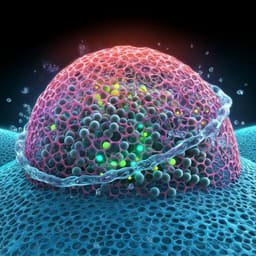
Engineering and Technology
Optimal number of faces for fast self-folding kirigami
H. P. M. Melo, C. S. Dias, et al.
This groundbreaking research conducted by H. P. M. Melo, C. S. Dias, and N. A. M. Araújo delves into the fascinating world of self-folding kirigami structures at the microscale. They reveal that the optimal number of faces for rapid folding is five, thanks to intricate thermal fluctuation dynamics. Their findings shed light on designing more complex structures with innovative applications.
Playback language: English
Related Publications
Explore these studies to deepen your understanding of the subject.







